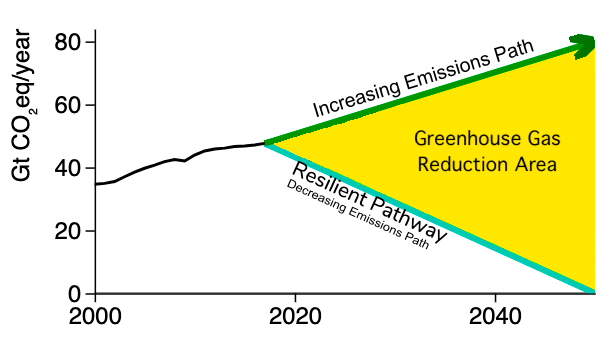Design Our Climate (DOCs)
Reducing our emissions is necessary to avoid the major consequences of climate change. But how do we reduce emissions? Design Our Climate simulation (DOCs) is a semi-quantitative simulation designed to illustrate how different energy choices and mitigation strategies can reduce greenhouse gas emissions. The goal is to determine how, with the use of today's technologies, anthropogenic climate change can be mitigated.
Currently, about 55 Gt CO2 eq are released into the atmosphere each year as a result of human activity, and that number is continually increasing. The IPCC has developed four climate scenarios predicting the effects of different climate action. If the high emission RCP8.5 scenario is followed, yearly emissions would increase to above 100 Gt CO2 eq per year by 2100, which would result in serious consequences for our climate.
The 2015 Paris Agreement has the central aim of keeping the global temperature rise this century well below 2 degrees Celsius above pre-industrial levels and ideally limit it to 1.5 degrees Celsius. To maintain the Paris agreement, greenhouse gas emissions need to reach net zero by mid century. This scenario is approximated in the graph below.

The graph above illustrates a range of possibilities, bounded by two scenarios. Each scenario imagines what the future could look like in terms of energy choices and climate change.
- In 2100 we have nearly tripled yearly greenhouse gas emissions! Shown by the top green line, this is approximately in line with the very high baseline emission RCP8.5 pathway. The surface air temperature has increased by approximately 3.5 - 5°C between 2000 and 2100, and sea levels rose about 2 m since 2000.
- By 2050 we have reduced yearly greenhouse gas emissions to 0 Gt CO2 eq and maintained net zero emissions to 2100! This is shown by the bottom green line, representing the targets set by the 2015 Paris Agreement. The surface air temperature has increased by around 1.5°C and sea levels have risen about 50 cm since 2000.